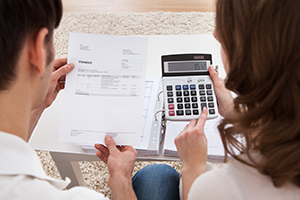Financial New Year’s Resolutions For 2016

By Patricia Seaman
Every year at this time we tell ourselves little white lies. We don’t think of them as untruths because we really intend to fulfill those promises.
Lose weight, quit smoking, find a new job and get out of debt. Sound familiar? Each January, we hope to improve our lives by making New Year’s resolutions. Keeping the promises is the hard part. But by some careful planning the job can not only be made easier, but it can set a course for us that will better our lives.
A survey by the National Endowment for Financial Education finds six in 10 people will set goals to improve their finances in the New Year. But will they stick? Because our resolutions oftentimes are lofty and unrealistic, many of us will give up on our goals before January even comes to an end.
If your goal is to get your personal finances in better shape in 2016, here are some basic tips to help you be more financially fit in the coming year.
Question: Where do you start in your efforts to get financially fit in 2016?

Answer: The first step is to get an accurate snapshot of your income versus expenditures every month. Beyond paychecks, include tax refunds, bonuses, overtime and gifts. Beyond monthly expenses, include sporadic bills such as car insurance and holiday gifts. Take a look at the big picture, including how much you owe on credit cards and loans and their repayment amounts. Also, you will want to identify what your big expenses will be in 2016. Our survey finds that people anticipate expenses related to the home, transportation, retirement and medical expenses to be among their biggest challenges. We also found that three in 10 Americans say that their finances are in worse shape than they expect them to be, and just 16 percent say that they are in better shape financially than they expect.
Question: Once I have figured out income to debt each month, how do I create a strategy for setting realistic goals for the year ahead?
Answer: First, assess higher-cost items that you will have this year, such as replacing your air conditioner, repairing your leaky roof, repairing your car, paying tuition for your son’s school, etc. Then look at what your wants are in 2016, like taking that vacation to Europe, buying new furniture for the living room, etc. Once you assess this it will help you shape your goals. You have to ensure that you can afford the things you need. After that preparation is done, then you can start to think about how to obtain the things that you want.
Question: How to I prepare for unexpected expenses?
Answer: Unexpected expenses are inevitable. It’s not if you’ll have them, it’s when. Among the most dreaded are related to transportation issues, housing repairs, increased out-of-pocket expenses for health care and our inability to keep up with debt and falling behind on payments. Unexpected expenses can destroy a budget. I suggest setting aside money regularly in a savings account. Automate your transfers to coincide with receiving your paycheck and start with a small, manageable amount. Once you reach your initial goal, it’s time to increase the amount you set aside.
Question: How much should I have in my savings account?
Answer: There are numerous opinions about how much money you should have set aside for unexpected expenses. Some say you want six to nine months in an accessible emergency account. While that is the goal, even a small amount—as little as $500—can make a big difference. If you haven’t started a reserve, start one now. If you have a reserve fund, commit to adding more to it—every little bit helps.
Question: How can I make my money work harder for me this year?
Answer: It’s a good habit to regularly look for better value in the services you use. Take some time to review your utility providers—and insurance carriers—and shop around to see if there are better offers. Even a few dollars in savings each month across your utilities can make a difference.
Question: After I have set my financial goals for the year, how can I ensure I stick to them?
Answer: It’s a good idea to find a financial buddy. This is someone who understands your goals and can help hold you accountable. Your buddy might be a family member or trusted friend. Be sure it is someone who understands your goals and will be the voice of reason if you start to stray. Also, give yourself weekly finance check-in quizzes. Are you on your way to reaching the goals that you’ve set? If not, what is derailing you and how can you get back on track? A surefire way to keep finances in control is to think twice before buying something on impulse. Six in 10 Americans admit to buying on impulse and 80 percent of those people regret the purchase afterwards. When you face the temptation to buy on impulse, walk away from the item for at least 30 minutes and see if you still want it.
Question: Where can I find more information and tips on setting goals and sticking to my plan of keeping my finances in shape?

Answer: SmartAboutMoney.org has many tips to better manage your money and will help you navigate financially through life events like getting married, buying a first home, welcoming a baby, financing your child’s education, and preparing for retirement.
Patricia (Pat) Seaman, senior director with SmartAboutMoney.org
Seaman is a senior director for SmartAboutMoney.org, a nonprofit dedicated to helping all Americans acquire the information and gain the skills necessary to take control of their personal finances. She is a life-long student of personal finance and is conversant in a wide variety of financial education topics and research. Prior to joining smartaboutmoney.org, Seaman was executive director of communications for the University of Wisconsin-Madison School of Business. She also has worked in education programs for the Radio-Television News Directors Foundation (RTNDF) and the Radio-Television News Directors Association (RTNDA).



